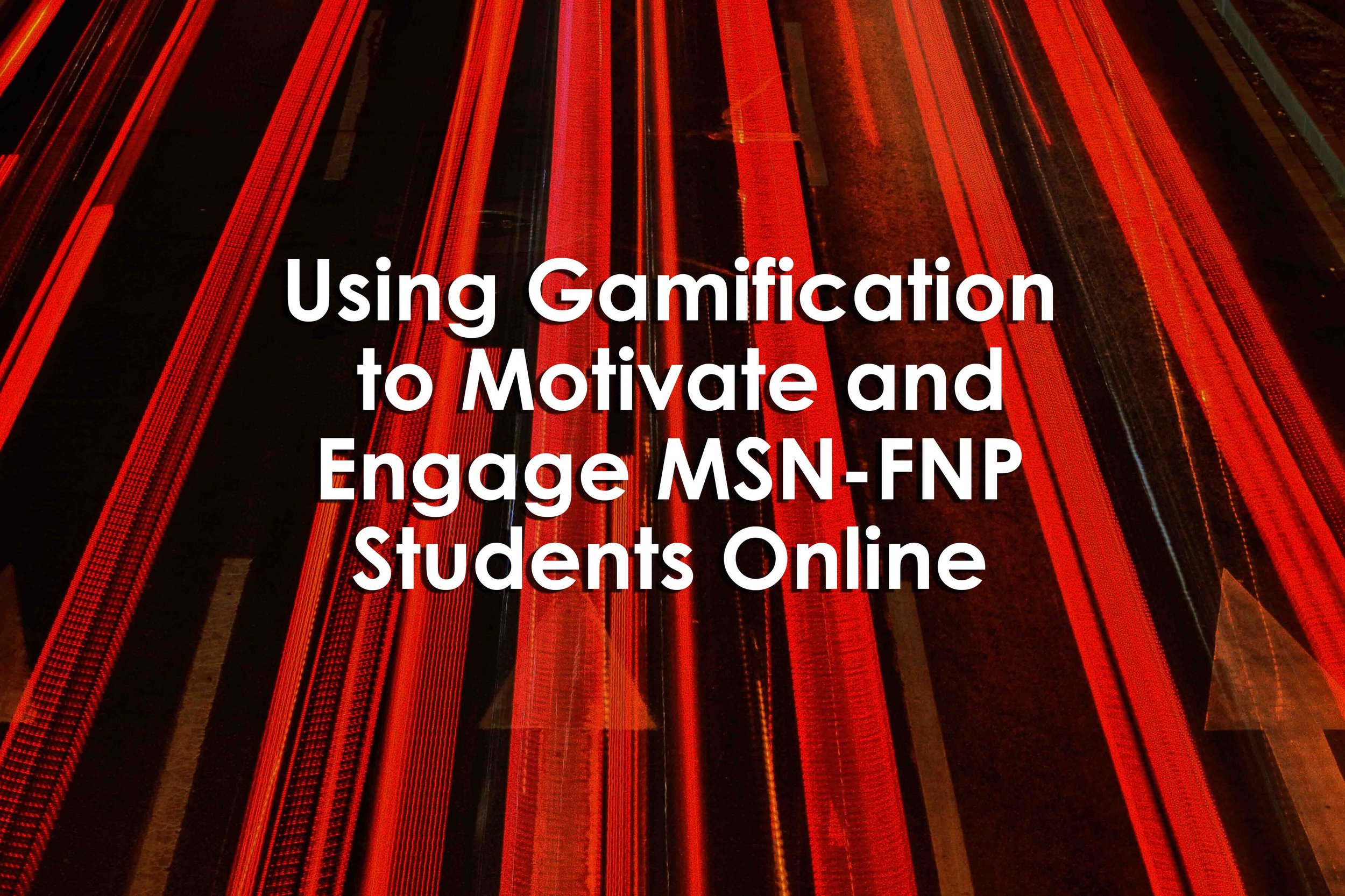Using Gamification to Motivate and Engage MSN-FNP Students Online
Using Gamification to Motivate and Engage MSN-FNP Students Online
Using Gamification to Motivate and Engage MSN-FNP Students Online
As online learning becomes increasingly popular, educators face new challenges in engaging and motivating students in virtual classrooms. Motivating and engaging students in online learning can be especially challenging in nursing programs, where students must not only acquire theoretical knowledge but also develop practical skills.
Fortunately, gamification, the process of applying game design principles to non-game contexts, offers a promising solution to this challenge. A report by Verified Market Research shows that the Gamification In Education Market had a value of USD 742.01 Million in 2020, and it is expected to grow at a CAGR of 31.29% from 2021 to 2028. This means that the market is projected to reach USD 6550.3 Million by 2028.
In this article, we will explore the potential benefits of gamification in motivating and engaging MSN-FNP (Master of Science in Nursing Family Nurse Practitioner) students online.
What is Gamification?
Gamification is the process of bringing game design concepts to non-game settings such as education, health, and business, such as points, badges, scoreboards, and challenges. Gamification's aim is to inspire and involve people by tapping into their innate desire to play and win.
Universities and educational institutions worldwide have started adopting gamified approaches to enhance the learning experience for students across different disciplines, including MSN-FNP programs.
If you are a student looking for gamified MSN-FNP programs online, it’s worth noting that many institutions, like Rockhurst University, located in Kansas City, Missouri, have implemented gamification programs. Such programs typically include a virtual patient simulation platform that allows students to practice clinical assessments and develop critical thinking skills in a safe and controlled environment.
It’s worth noting that as gamification becomes more mainstream, it is expected that it will become a core part of many educational programs, online and offline. By incorporating game-based learning approaches into their curriculum, more and more universities can make the learning experience more engaging and effective for students of all ages and backgrounds.
Benefits of Gamification in Online Learning
Gamification has been shown to have numerous benefits in online learning, including:
1. Increased student engagement: Students are more likely to remain engaged and motivated during the learning process if game-based learning methods are incorporated into online classes. Gamification can make learning more enjoyable and interactive, pushing students to remain concentrated and partake fully in the course.
In an October 2021 post from Educause, it was noted that gamification has the potential to increase student engagement and foster a greater sense of community, particularly as online learning expands beyond traditional physical classroom settings.
2. Enhanced learning outcomes: Studies have shown that gamification can improve knowledge retention and recall, as well as critical thinking and problem-solving skills. By using game elements such as quests, challenges, and feedback, students are better able to apply their learning to real-life scenarios.
3. Personalized learning experience: Gamification allows for personalized learning experiences by enabling students to progress at their own pace and providing them with immediate feedback on their progress. This can be especially beneficial in online learning environments, where students may not have direct access to instructors or peers.
4. Increased motivation and satisfaction: By tapping into students' intrinsic motivation to play and achieve mastery, gamification can boost student satisfaction and motivation. When students are more engaged and motivated, they are more likely to complete the course and achieve their learning goals.
Using Gamification in MSN-FNP Programs
Gamification can be used in a variety of ways to enhance the online learning experience for MSN-FNP students. Here are some examples of how gamification can be used in MSN-FNP programs:
1. Simulation-based learning: Gamification can be used to create realistic virtual patient simulations, allowing students to practice clinical assessments and develop critical thinking skills in a safe and controlled environment. These simulations can help students gain confidence and skill in their clinical work.
In a report published in the Pharmacy Education Journal in 2022, it was noted that virtual patient simulation had been shown to improve knowledge and clinical decision-making skills in pharmacy students. Additionally, this approach can cater to the needs of students who prefer active learning methods, such as interactive and hands-on experiences.
2. Interactive case studies: Gamifying case studies involves adding game components such as badges, rewards, and commentary. This can help students develop their analytical and problem-solving skills while also making the learning experience more engaging and memorable.
3. Collaboration and competition: Gamification can encourage collaboration and competition among students, fostering a sense of community and teamwork. For example, students can work together to solve a challenge or compete against each other to achieve the highest score.
4. Progress tracking: Gamification can provide students with real-time feedback on their progress, enabling them to identify areas where they need to improve and track their overall performance throughout the course.
Conclusion
Finally, gamification appears to be a viable answer to the problem of engaging and motivating MSN FNP pupils in online learning settings. Universities can improve students' learning experiences, boost interest and motivation, and improve learning results by integrating game-based learning methods into the curriculum.
Gamification also enables personalized learning experiences, simulation-based learning, interactive case studies, teamwork and rivalry, and monitoring of progress. As the gamification market expands, more colleges are anticipated to take this strategy in order to provide effective and interesting education for students of every demographic and age.


